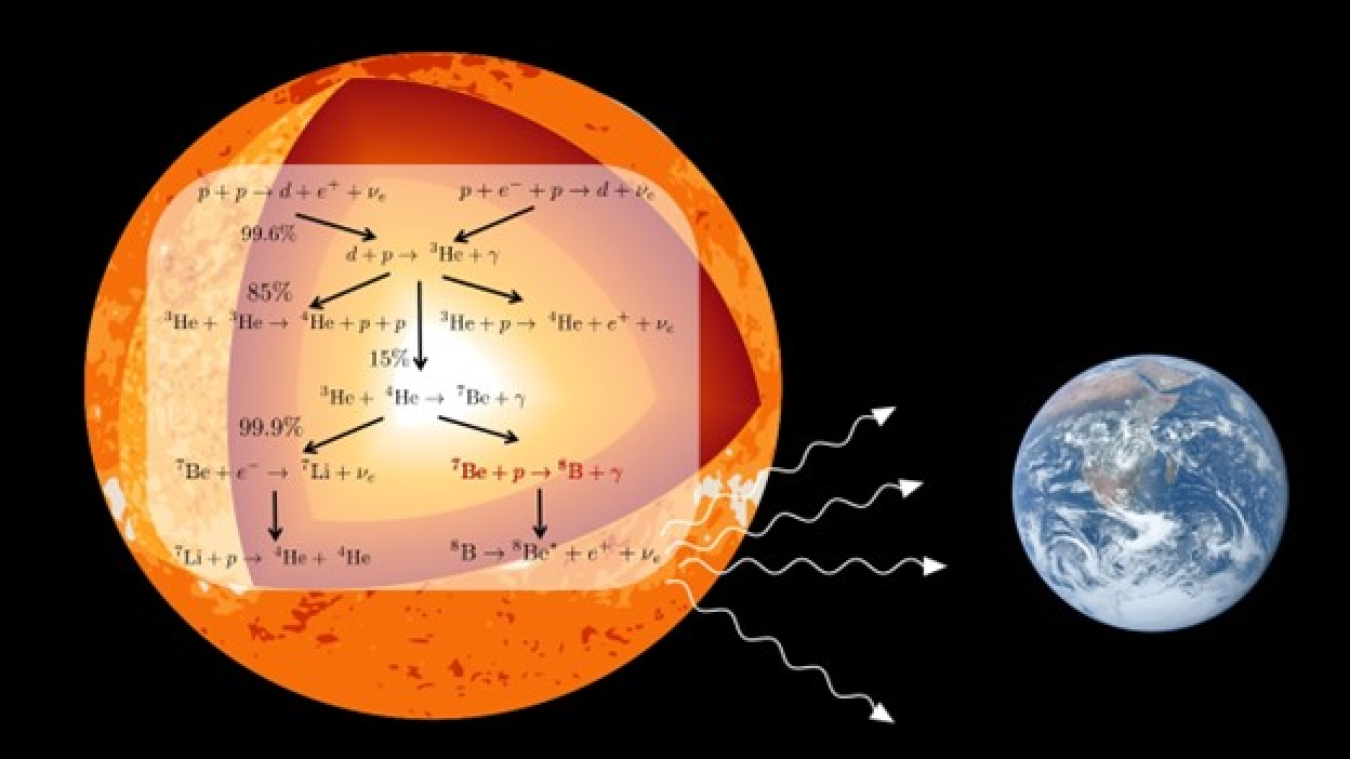
The Science
Most of the energy from the Sun and other stars comes from a chain of nuclear fusion reactions. The end of this chain is marked by the fusion of protons with beryllium-7 to form boron-8. This process is key in determining the flow of high-energy solar neutrinos that reach the Earth. The low-energy conditions under which these reactions take place inside the Sun are next to impossible to reproduce in laboratories on Earth. Therefore, scientists rely on theoretical calculations to extrapolate the rate of these nuclear reactions from the experiments they can conduct on Earth at higher energy. However, there’s a risk of uncertainty when performing these extrapolations. A novel protocol dramatically reduces this uncertainty.
The Impact
The new protocol gives scientists a better tool for determining the rate of fusion of protons with beryllium-7 at low energy using data from experiments conducted at higher energy. The result agrees statistically with the currently recommended value. It also reduces the uncertainty by a factor of five. In the future, this improvement will be joined by similar improvements for other critical reaction rates in the Sun. This will translate into more accurate predictions based on the standard solar model. This solar model describes how the Sun and other stars change over time. The end result will be an improved understanding of neutrino properties and the interior of the Sun using experiments that measure with high-precision how neutrinos form in the Sun and then move to the Earth.
Summary
Researchers conducted an extensive analysis of the beryllium-7 plus proton system and provided predictions with quantified uncertainties for its fusion cross section working within the framework of the no-core shell model with continuum, a first-principle approach that describes structure and reaction properties of light nuclei on the same footing. The use of a variety of two- and three-nucleon interactions from chiral effective field theory as well as multiple orders of the chiral expansion opened a window into the universal properties of the system as described by this low-energy effective theory of quantum chromodynamics. The researchers thus demonstrated the underlying features in the predicted capture rate enabling the combination of theoretical calculations and measurements to produce an evaluated proton-beryllium-7 astrophysical capture rate of S17(0) = 19.8 ± 0.3 eV b, which agrees with the currently recommended value within uncertainties but presents error bars that are smaller by a factor of 5.
The researchers expect that the new protocol combining predictive calculations (with quantified uncertainties) and experimental data established through this work will set a new standard for the evaluation of light-ion astrophysical reactions in regions where experimental measurements are not feasible. For example, this protocol will aid in studies of the fusion of helium-3 with helium-4 and the capture of protons on nitrogen-14 in the Sun.
Contact
Konstantinos Kravvaris
Lawrence Livermore National Laboratory
[email protected]
Sofia Quaglioni
Lawrence Livermore National Laboratory
[email protected]
Funding
This work was supported by the Department of Energy Office of Science, Office of Nuclear Physics, the Laboratory Directed Reseach and Development program at Lawrence Livermore National Laboratory (LLNL), and by the Natural Sciences and Engineering Research Council of Canada. Computing support for this work came from the LLNL institutional Computing Grand Challenge program and from an INCITE (Innovative and Novel Computational Impact on Theory and Experiment) Award on the Summit supercomputer of the Oak Ridge Leadership Computing Facility at Oak Ridge National Laboratory.
Publications
Kravvaris, K., et al., Ab Initio Informed Evaluation of the Radiative Capture of Protons on 7Be, Physics Letters B 845, 138156 (2023). [DOI: 10.1016/j.physletb.2023.138156]
Scraped from https://www.sourcearu.com




